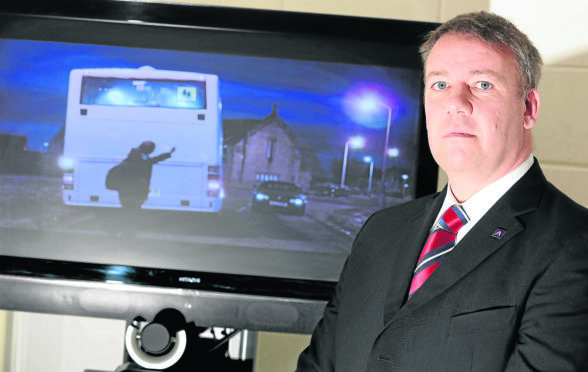The number of people fatally injured on Grampian’s roads are at a record low, new statistics have revealed.
According to the Road Safety North East Scotland unit, deaths are at their lowest levels since records began more than 40 years ago.
Last night, safety campaigners hailed the news and suggested better education and road design had played a part.
The figures show there were 14 fatalities in Aberdeen, Aberdeenshire and Moray last year – down from the previous low of 22 in 2011.
It is a stark comparison from 1976, when 102 people were killed – equalling almost two deaths every week.
Ewan Wallace, Aberdeenshire Council’s transport boss and chairman of the lead officer’s group for the North East Scotland Road Casualty Reduction Strategy, said: “I don’t think you can really put your finger on any one intervention that has made a difference for all of those numbers.
“Undoubtedly when you look at the design of vehicles now compared to 40 years ago, the vehicle standards have made a significant difference.
“There has always been a focus on lessening the impact of a collision and on the engineering side where we have tried to take out locations where people lose control and the impact of that isn’t quite as severe as before.
“Then there is the education of drivers in terms of the awareness of people who they are travelling about.
“So when you add up all those things together it does lead to this significant reduction.”
Currently, Aberdeenshire Council is consulting on ways to improve the A947 Aberdeen to Banff road, where 12 people have died in the past seven years. Proposals include creating more laybys and passing places after driver frustration was identified as a potential contributory factor.
And efforts are also being made to ensure the Safe Drive Stay Alive scheme, which targets young drivers, continues this year.
The initiative – which has been running for the last 13 years – brings senior school pupils from across Grampian together at the Beach Ballroom in Aberdeen, where they are shown a hard-hitting video and hear from the emergency services to bring home the real dangers of the road. This year’s event has been backed by Nexen Petroleum UK, however the council has revealed that as yet there are no other sponsors, putting the show in jeopardy.
However, it is not just young drivers that road safety campaigners are keen to educate – with the police’s Operation Cedar (Challenge, Educate, Detect and Reduce) also tackling older people behind the wheel. As part of the campaign, officers have stepped up patrols on roads identified as a priority, tackled mobile phone users and raised awareness of health issues that affect people behind the wheel.
Christopher Littlejohn, deputy director of public health at NHS Grampian, stressed that although it was good news that roads deaths are down, efforts will continue to reduce them even further.
“There is a real focus within the partnership to reduce the number of casualties on north-east roads and these provisional figures show that considerable progress is being made,” he said.
“The partnership is working on a number of local road casualty reduction initiatives, specially aimed at road users who are considered to be at greater risk of becoming a casualty.
“Our partnership aim is ‘a future where no one is killed on north-east roads and the injury rate is much reduced’ and this outcome is behind all of our activities.”
RSNES involves Aberdeen City Council, Aberdeenshire Council, Moray Council, Nestrans, NHS Grampian, the North Safety Camera Unit, the police and fire service.
